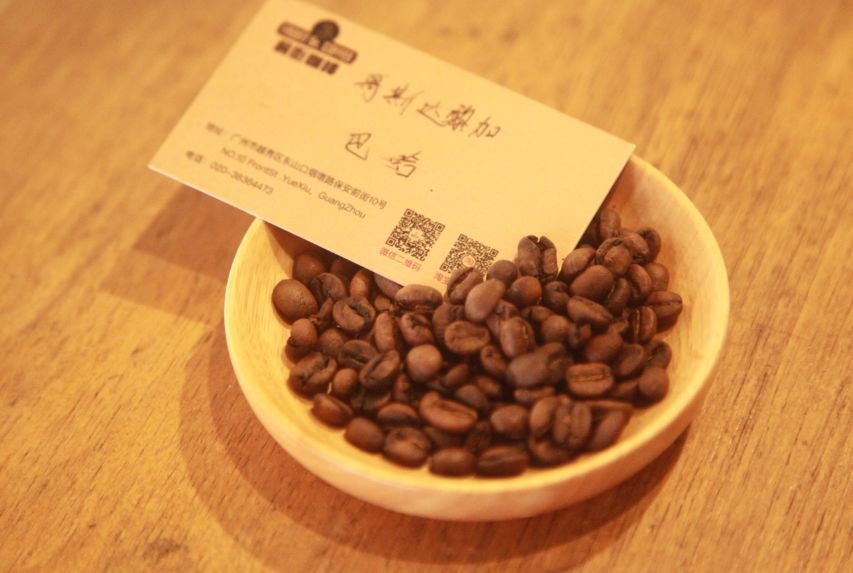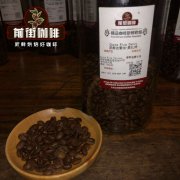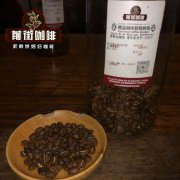Costa Rican Baja and Mozart Coffee Bean Flavor Characteristics Comparison Introduction
Costa Rica Baja producing country: Costa Rica producing area: Tara Zhukanette Manor altitude: 1900m varieties: F1 treatment: raisin honey treatment baking degree: medium-shallow roasting recommendation according to the SCA recommended hand-brewed coffee weight of 15g coffee powder 90 degrees to 91 degrees hot water 225ml, gouache ratio 1:15. The specific flavor is fermented like ripe berries, with aromas of roses, sweet and sour blueberries, creamy smoothness and a caramel finish. Bach's music is exquisite, rich and organized at the same time. This dried coffee bean has aromas of strawberries, blackberries, raisins and other fruits. As soon as it is cooked, there is an obvious aroma of flowers and fruit, and after the entrance, it also feels a strong aroma of fruit and a sense of acidity and sweetness, with a hint of wine in the middle and back, like a red wine. After cooling down, it has a sweet aroma of candied fruit, and the aroma of the wine is more obvious, and you can even feel the flavor of plum wine. Such a delicate taste is really like the music of Bach.

Coffee bean variety
Catuai Amarillo
Now we see that the commercial results of F1 varieties were planned as early as the 1990s. In 1970, coffee tree buster coffee camel rust (the source of leaf rust) swept the American continent, the singleness of the American coffee gene made it unable to fight leaf rust, and the whole army was wiped out in one day of infection. It was against this backdrop that an F1 project was born, led by the French Centre for Agricultural Research and Development (CIRAD) and the Coffee Organization of Central American countries (ROMECAFE), with the assistance of the Inter-American Institute of Agriculture (IAC) and the Costa Rican Tropical Research and Education Centre (CATIE). They believe that Kaddura and Kaduai are widely cultivated in South America and that their disease resistance is very fragile. So I want to cultivate a new generation with both flavor and vitality by means of hybrid cultivation.
The Costa Rican Tropical Research and Education Center selected from hundreds of coffee varieties.
Kaddura, Kaduai, Katim, sarchimor Tmur5296 (a hybrid of Verasage and Timo) and wild varieties were pollinated in alienation. After 5 years of efforts, 100 different F1 varieties were produced, and 20 excellent ones were selected for breeding. These early generations, known as F1, have stronger disease and drought resistance and higher yields. The cultivated varieties also need to make the genes stable (can be inherited), so it is necessary to continue to cultivate the offspring and the second generation, and it is expected that the genetic stability can not be determined until the eighth generation. That's why there will be F1 hybrids on the market this year.

Treatment of raisin honey
Retain 100% pectin and zero water treatment.
It increases the difficulty of the honey processing method, which requires strict control of time. On the day of harvesting coffee cherries, pour the harvested coffee fruit into a big trough, and the ripe and full fruit will sink to the bottom of the water; the underdeveloped or overripe fruit will surface, and these floating beans need to be removed. Dry the screened coffee fruits on an elevated bed for at least three days, then peel the cherries and retain the pectin before drying. At this stage, climate factors are the key to the success of honey treatment.
Keep turning these coffee cherries during the drying process to make them dry evenly, but control the turning frequency and dry slowly to ensure that the coffee is fermented, but not so slowly that it is overfermented.
Carnett Manor
Finca Canet is a small 5-hectare estate in the town of San Marcos in Tarrazu, owned by three brothers, the Robles brothers Leo and Elian and Melvin, who have worked together for more than 10 years and share a small water treatment plant (Beneficio).
Carnett Manor is located at the highest altitude where Tarrazu coffee is grown in Costa Rica. This area is the most densely planted area of Costa Rican fruit, the main manor is to grow passion fruit, the amount of coffee is quite rare, there is only one specific area to grow coffee, take special care, only pick ripe red cherry fruit.
Important Notice :
前街咖啡 FrontStreet Coffee has moved to new addredd:
FrontStreet Coffee Address: 315,Donghua East Road,GuangZhou
Tel:020 38364473
- Prev

What are Costa Rican coffee grades? Musician Series Mozart Treatment Flavor Features
Costa RicaMozart Country of Origin: Costa RicaRegion of Origin: TaraPearl Altitude: 1800m Variety: H1 Treatment: Raisin Honey Treatment Roast Degree: Medium Light Roasting Recommended by SCA Hand-brewed coffee gram weight is 15g Coffee powder 90 degrees to 91 degrees Hot water 225 ml, water powder ratio 1:15. Flavors are complex floral and fermented sauces with raisins and dried fruit
- Next

What's the secret of Costa Rican coffee? What grade of coffee beans is Beethoven coffee?
Costa Rica Beethoven country: Costa Rica Manor: Carnett Manor Variety: yellow Kaduai treatment: washing altitude: 1900 m baking degree: moderate baking flavors reflect a wide variety of fruits, strawberries, apples, lemons, grapes, citrus flavors are displayed, and the flavors of honey and toffee are unforgettable. The taste is smooth and creamy.
Related
- Detailed explanation of Jadeite planting Land in Panamanian Jadeite Manor introduction to the grading system of Jadeite competitive bidding, Red bid, Green bid and Rose Summer
- Story of Coffee planting in Brenka region of Costa Rica Stonehenge Manor anaerobic heavy honey treatment of flavor mouth
- What's on the barrel of Blue Mountain Coffee beans?
- Can American coffee also pull flowers? How to use hot American style to pull out a good-looking pattern?
- Can you make a cold extract with coffee beans? What is the right proportion for cold-extracted coffee formula?
- Indonesian PWN Gold Mandrine Coffee Origin Features Flavor How to Chong? Mandolin coffee is American.
- A brief introduction to the flavor characteristics of Brazilian yellow bourbon coffee beans
- What is the effect of different water quality on the flavor of cold-extracted coffee? What kind of water is best for brewing coffee?
- Why do you think of Rose Summer whenever you mention Panamanian coffee?
- Introduction to the characteristics of authentic blue mountain coffee bean producing areas? What is the CIB Coffee Authority in Jamaica?

